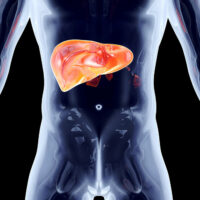9 questions to ask the doctor during a checkup

Actively asking your doctor questions is one way through which you can know more about your health. It gives patients a safe space to discuss potential problems or special care needs they may have, so that a more comfortable healthcare experience can be curated. If one is too stressed to visit the physician on their own, they can take a trusted person along, and prepare a list of questions to ask the doctor.
Am I at risk for any health issues?
Discussing one’s lifestyle habits with the doctor (along with factors such as age and gender) can help set realistic expectations for health in the future. Doing so can also help recognize any risks or complications.
Are there any additional screenings I need to undergo?
Depending on one’s age and other factors, doctors may recommend additional tests or screenings such as lipid testing for cholesterol levels, hemoglobin A1c screening for diabetes, a colonoscopy, a PAP smear for cervical cancer, etc.
When should I schedule my next appointment?
Depending on one’s general health and lab test results, a person may be asked to return on a date sooner than their scheduled annual or bi-annual checkups.
Are my physical tests (BMI, Blood pressure, heart rate/breathing signs) normal?
Seeking clarity for one’s physical tests like body mass index, blood pressure, heart rate, and breathing signs such as shallow, rapid, or labored breathing can help one make better lifestyle choices.
How does stress affect my health?
Discussing one’s mental health is also an important aspect of a routine checkup. High stress levels or anxiety can have an impact on the test results. One should talk about these symptoms with a doctor, and discuss options to manage them.
What are some healthy lifestyle practices I can follow in the future?
A routine health checkup is a great time to set up goals for one’s future physical health and learn how to manage chronic diseases better. Speak to the doctor about healthier lifestyle practices such as a nutritional meal plan, and exercises that can be done regularly. Some of these choices may depend on overall health, allergies, and other factors.
Do I need to visit a specialist?
Depending on one’s lab results, doctors may at times recommend seeing a specialist. For instance, in case of an irregular PAP test or breast exam, a general physician may recommend visiting a gynecologist. Similarly, in conditions that require surgery, like gallstone removal, they may recommend visiting an oncologist and charting out a plan of action.
Given my personal and family history, am I at a higher risk for certain illnesses?
Those with a family history of certain ailments may face a higher risk of developing it themselves. Examples of such conditions include heart disease, stroke, diabetes, cancer, and some psychiatric disorders. Depending on one’s history, a family doctor may suggest certain tests more often for these conditions, and monitor their development closely.
Can you explain my test results?
Asking for more details on one’s test results can help a person feel more confident about their health. It can also help them make informed decisions about their lifestyle.





